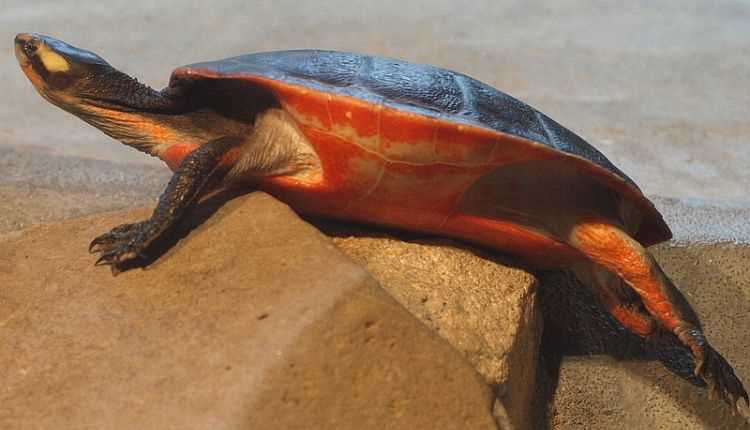
One of the most striking features of the Red Bellied Short-Necked Turtle is its vibrant red belly, which contrasts beautifully with its dark-colored shell. This coloration is what gives the species its name and makes it easily recognizable. Along with its red belly, the turtle has a relatively short neck compared to other turtle species, which adds to its charm and individuality.
In terms of diet, Red Bellied Short-Necked Turtles are omnivorous, meaning they eat both meat and plants. Their diet should consist of a mixture of protein-rich foods, such as worms, insects, and fish, as well as leafy greens and vegetables. Feeding them a balanced diet will help ensure their overall health and well-being.
Overview of the Red Bellied Short Necked Turtle
The red bellied short necked turtle is a small to medium-sized turtle, with males typically being smaller than females. They have a smooth shell that ranges in color from dark brown to black, with some individuals having unique patterns and markings.
In terms of behavior, these turtles are generally docile and make great pets for turtle enthusiasts. They are omnivorous, feeding on a diet consisting of both plants and animals. In captivity, they can be fed a balanced diet of commercial turtle pellets, vegetables, fruits, and occasionally live prey.
Physical Characteristics
The red bellied short necked turtle has a distinctive appearance, with its bright red belly and short neck. It has a smooth shell that can range in color from dark brown to black. Some individuals may have unique patterns and markings on their shell.
These turtles have webbed feet and claws, which aid in their swimming and digging abilities. They have a relatively small head with a short snout, and their eyes are located on the sides of their head.
Habitat and Distribution
The red bellied short necked turtle is native to Australia and can be found throughout the eastern parts of the country. They are commonly found in freshwater habitats such as rivers, lakes, and ponds. These turtles are adaptable and can tolerate a wide range of environmental conditions.
Conservation Status
The red bellied short necked turtle is listed as a species of least concern by the International Union for Conservation of Nature (IUCN). However, their population numbers have been declining due to habitat loss, pollution, and the introduction of non-native species.
Conclusion
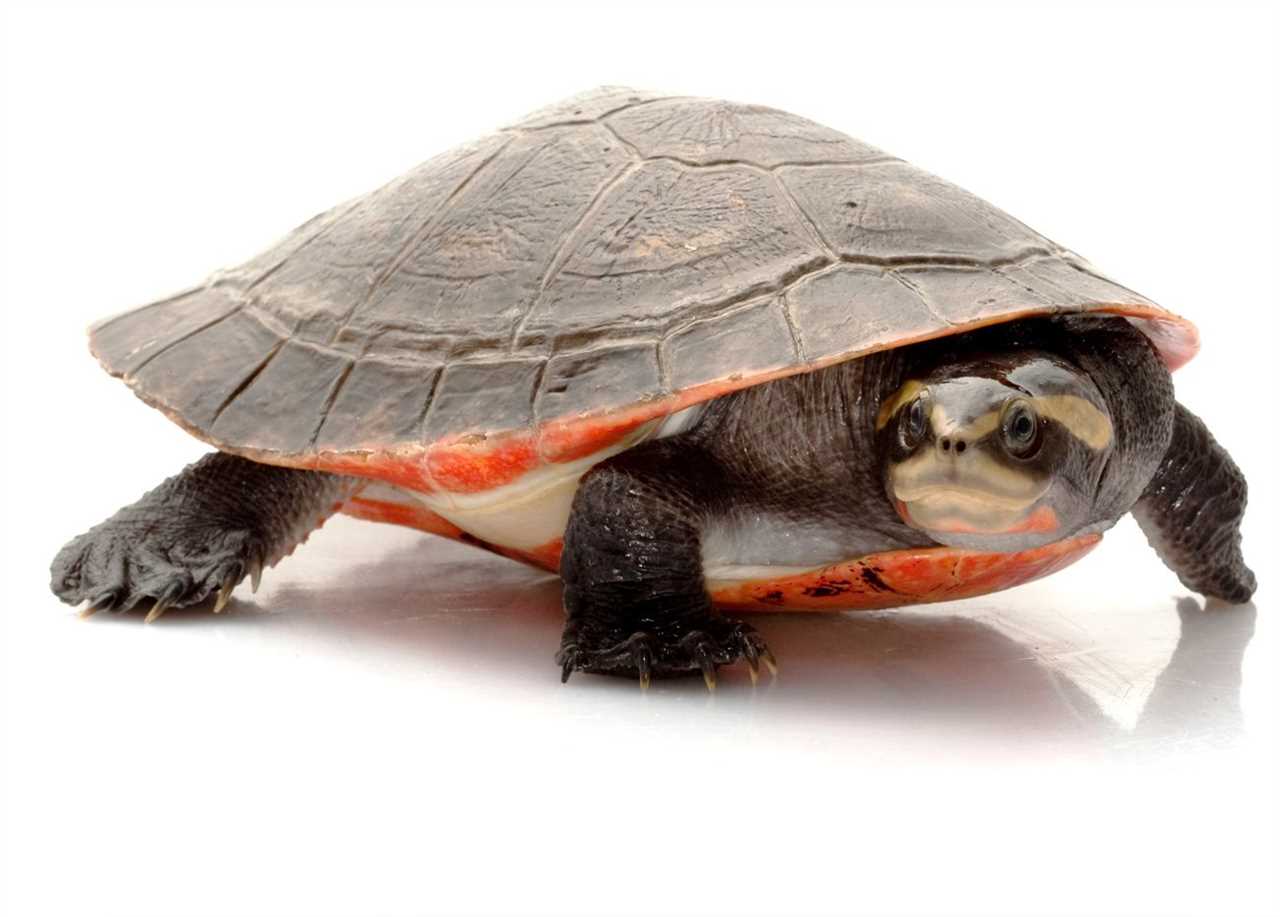
Importance of Providing Proper Care for the Red Bellied Short Necked Turtle
Creating a Suitable Habitat
The first step in providing proper care for a red bellied short necked turtle is creating an ideal habitat. This habitat should mimic the natural environment to make the turtle feel comfortable. It should include a large tank or enclosure with clean, filtered water. The tank should also have a dry basking area where the turtle can rest and warm up under a heat lamp. Additionally, providing hiding spots, such as rocks or plants, will allow the turtle to retreat and feel secure in its environment.
Temperature and Lighting Requirements
Proper temperature and lighting are essential for the health and well-being of a red bellied short necked turtle. The tank should maintain a temperature between 75-85°F (24-29°C) during the day and slightly cooler at night. A basking area with a temperature of around 90°F (32°C) should be provided for the turtle to regulate its body temperature. It’s also important to provide a UVB light source to ensure the turtle receives the necessary vitamin D for proper bone growth and overall health.
Feeding and Nutrition
Interaction and Handling
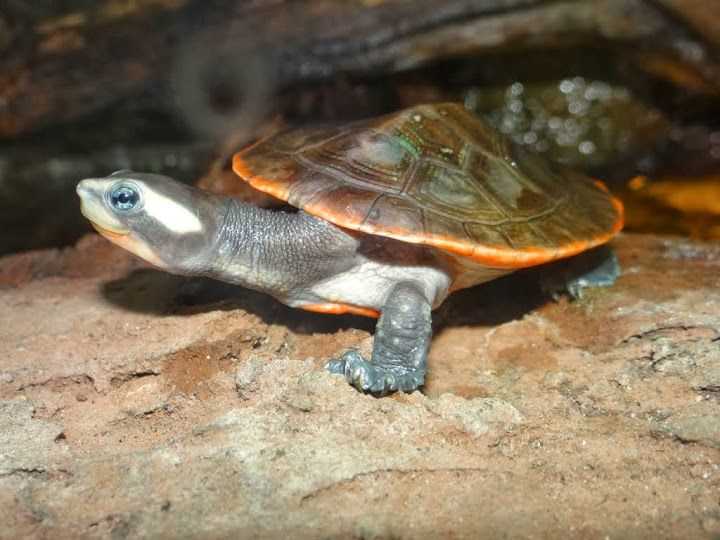
Regular interaction and handling are important for a red bellied short necked turtle. While they may not enjoy being held like some other pets, they still benefit from time outside of their enclosure. This can include supervised walks in a secure outdoor area or exploring a larger tank setup. Handling should be done gently and with care, avoiding excessive stress on the turtle.
The Ideal Habitat for Your Red Bellied Short Necked Turtle
Creating the perfect habitat for your red bellied short necked turtle is crucial for its overall health and well-being. By providing the right environment, you can ensure that your turtle stays happy and thriving. Here are some key factors to consider when setting up its habitat:
1. Tank size: Red bellied short necked turtles require a spacious tank to allow for swimming and exploration. A tank that is at least 60 gallons is recommended for one turtle, with an additional 20 gallons for each additional turtle.
2. Substrate: Choose a substrate that is safe and easy to clean. Gravel or sand can be used, but make sure the particles are small enough to prevent your turtle from accidentally ingesting them.
3. Basking area: Turtles need access to a dry area where they can bask and soak up UV rays. Include a basking platform or rock with a heat lamp or UVB light. The temperature of the basking area should be around 85-90°F.
4. Water quality: Turtles are aquatic animals, so maintaining clean and filtered water is essential. Use a filtration system to keep the water free from waste and debris, and regularly test the water parameters to ensure they are within the appropriate range.
5. Temperature and lighting: Turtles require a well-regulated temperature and lighting system. Use an underwater heater to maintain a water temperature of around 75-80°F. Provide a UVB light source to simulate natural sunlight, which is important for their calcium absorption.
6. Hiding spots: Your turtle will appreciate having hiding spots in its habitat. Add rocks, plants, or caves for them to retreat to when they feel the need for privacy or security.
7. Enrichment: Turtles are curious creatures and thrive with mental stimulation. Include toys, floating objects, or live plants to keep them engaged and entertained.
8. Maintenance: Regularly clean and maintain the turtle’s habitat to ensure a healthy environment. This includes cleaning the tank, changing the water, and checking the equipment to ensure it is functioning properly.
By following these guidelines, you can create an ideal habitat for your red bellied short necked turtle and provide it with a comfortable and thriving home.
Temperature and Lighting Requirements for Red Bellied Short Necked Turtles
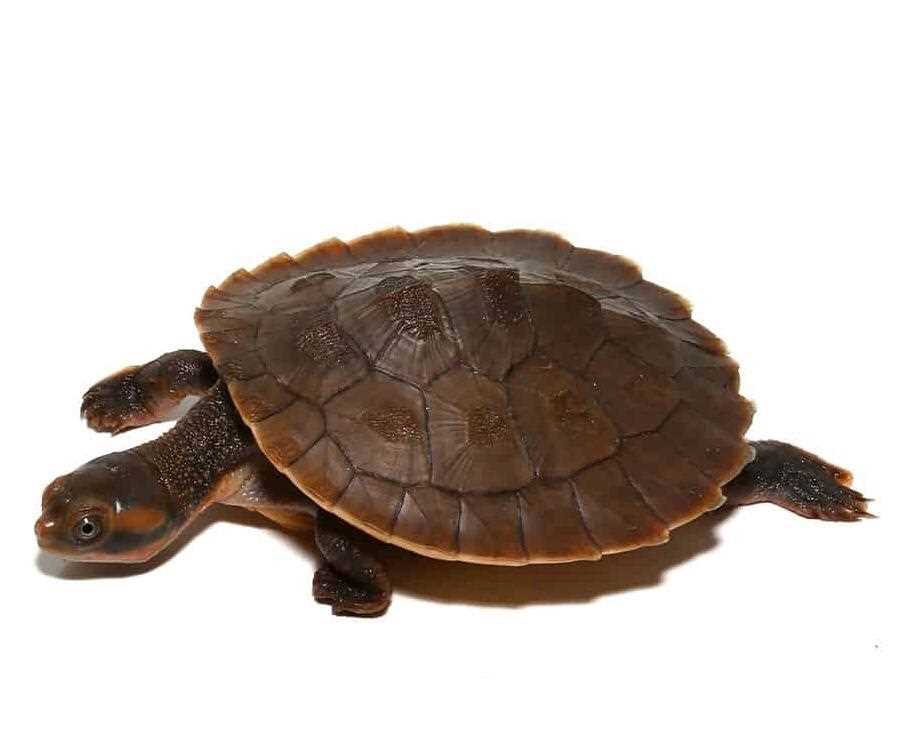
Proper temperature and lighting are essential for the health and well-being of red bellied short necked turtles. These turtles are ectothermic, which means they rely on their environment to regulate their body temperature. Providing the correct temperature gradient and appropriate lighting is crucial for their overall health and vitality.
In addition to temperature, lighting is also crucial for red bellied short necked turtles. These turtles require access to both UVA and UVB light to support their overall health and metabolic functions. UVB light helps turtles metabolize calcium, which is essential for shell and bone health.
You can provide UVB light using specialized reptile UVB bulbs, which should be placed approximately 12 inches above the basking area. It is recommended to use a timer to provide a consistent photoperiod of 10 to 12 hours of light per day. This will mimic the natural light cycle and help establish a regular routine for your turtle.
Feeding and Nutrition for Red Bellied Short Necked Turtle
Proper feeding and nutrition are crucial for the health and well-being of your Red Bellied Short Necked Turtle. These turtles are primarily carnivores, feeding on a variety of insects, small fish, crustaceans, and even small mammals.
When feeding your turtle, it is essential to provide a balanced diet that mimics their natural food sources. Commercial turtle pellets can serve as a base diet but should be supplemented with fresh foods. Offer a variety of protein-rich foods such as earthworms, crickets, shrimp, and fish.
Always ensure that fresh, clean water is available for your turtle to drink and soak in. They require a shallow water dish or aquarium to swim and submerge themselves in. Remember to clean and refill the water regularly to maintain proper hygiene.
Supplementing your turtle’s diet with calcium and vitamin D3 is crucial for their shell and overall health. Dusting their food with a reptile-specific calcium and vitamin supplement is recommended several times a week.
Observing your turtle’s behavior and body condition is essential to monitor their health. If you notice any changes in appetite, weight loss, abnormal behavior, or signs of illness, consult a reptile veterinarian for proper diagnosis and treatment.
Providing a well-balanced diet and nutrition, along with a suitable habitat, will ensure the longevity and vitality of your Red Bellied Short Necked Turtle.
Water Quality and Filtration for the Red Bellied Short Necked Turtle
Proper water quality and filtration are essential for maintaining a healthy environment for your Red Bellied Short Necked Turtle. Turtles are highly reliant on water to regulate their body temperature, obtain oxygen, and eliminate waste. Therefore, it is crucial to ensure that the water in their habitat is clean and well-filtered.
Why is water quality important?
Water quality plays a vital role in the overall health and well-being of your turtle. Poor water quality can lead to various health issues, such as shell rot, respiratory infections, and skin diseases. Additionally, dirty water can negatively affect the turtle’s immune system, making them more susceptible to illnesses.
The importance of filtration
An efficient filtration system is crucial in removing waste, debris, and harmful substances from the water. The filter should be appropriately sized for the tank and capable of handling the volume of water present. It is recommended to choose a filter with mechanical, chemical, and biological filtration capabilities to ensure thorough purification.
- Mechanical filtration: This stage of filtration removes physical debris, such as uneaten food, feces, and plants, using filter media like sponges or floss. Regular cleaning or replacement of these filter media is necessary to prevent clogging and maintain optimal performance.
- Chemical filtration: Activated carbon or other chemical filter media can help remove impurities, odors, and harmful chemicals from the water. It is essential to replace these filter media as recommended by the manufacturer to ensure their effectiveness.
- Biological filtration: Beneficial bacteria colonize the filter media and help break down harmful substances like ammonia and nitrites into less harmful compounds. This process is crucial for maintaining a healthy nitrogen cycle in the aquarium. Avoid cleaning or replacing the biological filter media unless necessary, as it may disrupt the beneficial bacteria colonies.
Regular maintenance and water changes
In addition to regular maintenance, partial water changes should be performed on a routine basis. This helps dilute any accumulated toxins or pollutants and replenish essential minerals and nutrients. The frequency of water changes will depend on the size of the tank, the number of turtles, and the efficiency of the filtration system. It is generally recommended to change approximately 25% of the water every 1-2 weeks.
By ensuring proper water quality and filtration, you can provide a clean and healthy habitat for your Red Bellied Short Necked Turtle, promoting their overall well-being and longevity.
Handling and Interaction with Your Red Bellied Short Necked Turtle
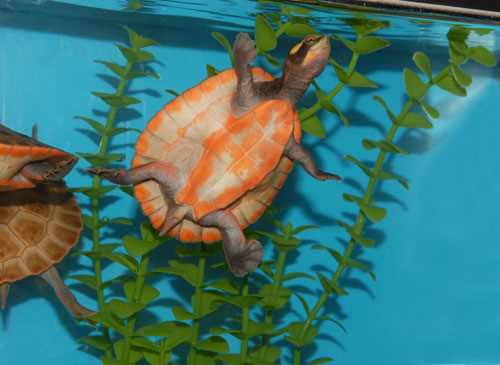
It’s also crucial to give your turtle ample time to settle into its new environment before attempting any interaction. This will help it feel more comfortable and secure.
Proper Handling Techniques
When handling your turtle, always approach it from the front and scoop it up from below. Avoid touching the turtle’s back or putting pressure on its shell, as this can cause discomfort or injury. Support the turtle’s entire body with your hands, ensuring a secure grip but not squeezing too tightly.
Always wash your hands thoroughly before and after handling your turtle to prevent the transmission of any bacteria or diseases.
Limiting Interaction
Alternative Forms of Enrichment
If your Red Bellied Short Necked Turtle does not enjoy being handled, there are alternative forms of enrichment you can provide. Decorating their tank with a variety of plants, rocks, and other hiding spots will give them the opportunity to explore and feel secure in their environment. Additionally, adding floating objects or toys to their enclosure can provide mental stimulation.
Observing your turtle’s natural behaviors, such as swimming and feeding, can also be a form of interaction. Spend time watching your turtle from a distance, allowing it to feel comfortable and at ease.
Health Considerations and Common Issues
3. Parasites: Turtles can be prone to internal and external parasites. External parasites, such as ticks and mites, can cause skin irritation and discomfort for your turtle. Internal parasites, such as worms, can negatively impact your turtle’s overall health and digestive system. Regular fecal testing and parasite prevention treatments are important preventive measures. If you suspect your turtle has parasites, consult a veterinarian for proper diagnosis and treatment.
By staying attentive to your Red Bellied Short Necked Turtle’s health and addressing any issues promptly, you can help ensure a long and healthy life for your beloved pet.

I’m Lena Adams—a product of an unconventional upbringing in the African wilderness. My father, a daring explorer of African wildlife, sparked my fascination with reptiles, a passion that intertwined with the tragic loss of my mother during an expedition, leaving an indelible mark on my life. Driven to understand the creatures that captivated my parents, I embarked on my journey, sharing insights about reptiles, frogs, and lizards on my website. Through my explorations and conservation efforts, I honour my family’s legacy while seeking connections—to the creatures, nature, and the mother whose presence I yearn to understand.
